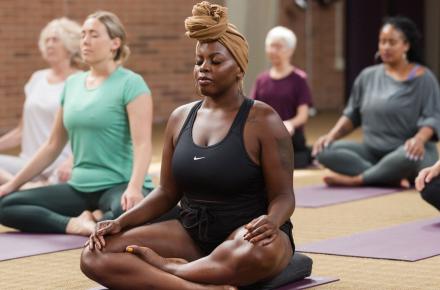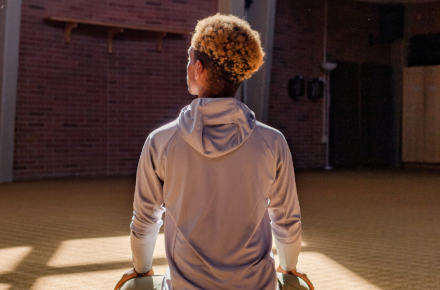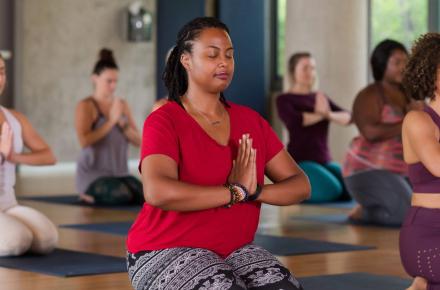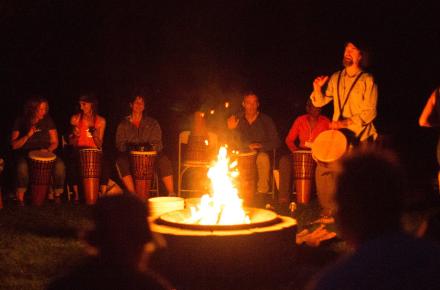A Meditation for Managing Your Mood When Conflict Arises


I want to unfold.
Let no place in me hold itself closed,
For where I am closed, I am false.
I want to stay clear in your sight.
—Rainer Maria Rilke
We’ve all had experiences where we’ve felt unjustly attacked or betrayed. Yet, when an incident disturbs our peace of mind, we have choices. We can turn the conflict over and over in the mind, our thoughts spinning ever tighter, like the bands inside a golf ball, as anxiety increases. Or we can attempt to forget it, just toss the betrayal over the fence. Both of these choices close us down. A part of the mind constricts. If we follow the first course of action, obsessing about the incident, we can lose sleep, be distracted from our work, and distance ourselves from our intimates. Eventually, the knotted ball of pain is internalized in the body, joining with chronic tension in the shoulders or neck, or wherever we store stress. We know the effects of stress on body and mind—including the increased risk of heart disease. If we’re anxious and losing sleep over the issue, the insomnia can lead to a depressed mood, and we can feel trapped in a seemingly unending cycle of anxiety and depression.
If on the other hand, if we attempt to toss it over the fence, or “just let it go,” as a well-meaning friend might say, we may find ourselves looking for ways not to feel. We might indulge in mindless, patterned behaviors (watching too much television, surfing the internet, drugs, sex, alcohol) to numb the pain. Whether we worry and obsess, or try to bury it under the rug, we are closing off parts of ourselves. When we are feeling stressed or scared or misunderstood, it’s easy for those closed-off, defended parts to take the lead. We might appear rigid and reserved, or defensive, or falsely congenial. Those closed-down parts within us are there for good reason. They’ve been wounded and they want to protect us from further hurt. Sometimes they do their job so well that we feel nothing at all. Rilke’s quote speaks for our wise and compassionate inner knowing that wants those wounded, shut-down parts to know that it’s safe to release. But how do we stay open through the pain of injustice and betrayal?
One way is to cultivate a yoga practice that helps us clear the space within, which means we pay attention to sensation and breath as we practice, watching without judgment all that arises. It means we use pranayama to create a sense of spaciousness within, so we’re less constricted around the story. If we simply try to meditate without clearing the space with movement (asana), breathing practice (pranayama), imagery (bhavana), mudra (hand gesture), or sound (mantra), it may feel impossible to sit through the discomfort of our thoughts without spiraling into a darker place. We might rise from the cushion feeling just the opposite of Rilke’s expressed yearning. Instead of the unfolded, open clarity we seek, we feel as though the fog has rolled in.
LifeForce Yoga Bliss Meditation for Conflict is designed to shine a light through the fog, opening and unfolding us to the clear space beneath the pain. This practice gives the busy mind a bone to gnaw on, so it’s less likely to get caught in the loop of angry or self-judging thoughts. We engage the energy centers, known as the chakras, with breath, visualization, mantra, and gesture. It’s a short meditation practice that can shift the mood, reminding us that, although the feelings and thoughts may remain, we are so much more than our ruminations. It can create a spacious awareness of grounded presence where mindfulness naturally arises—a beautiful portal into a longer meditation.
LifeForce Yoga Bliss Meditation for Conflict
- Sit comfortably with the spine erect, or lie down. Begin to notice the breath—first at your nostrils, as it flows in and out, and then notice how the belly is receiving the breath. Notice if the chest is responding to the breath. Welcome the breath, wherever it’s landing.
- Now imagine that you are inhaling from your feet to the crown of your head. Imagine that you are exhaling to your feet. As you inhale to your crown, say to yourself silently, I am. As you exhale to your feet, say to yourself silently, Here. Repeat several times, varying it by exhaling to the seat with the word Grounded.
- Inhale to the crown, with the words, I am. Exhale to the brow point with the word Clarity. Repeat several times.
- Inhale to the crown, with the words I am. Exhale to the heart with the word Compassion. Repeat several times.
- Now visualize what you imagine to be the source of the conflict you are facing. Inhale to the crown, with the words I am. Exhale to the solar plexus with the word Courage. Repeat several times.
- Now visualize an image for calm strength. This can be a scene from nature, an animal, or a powerful image of yourself. As you hold this image in your heart’s mind, inhale to the crown, with the words I am. Exhale to the solar plexus with the words Calm strength. Repeat several times.
- This time, as you inhale, extend your arms in front of your solar plexus as you visualize the image you have cultivated for calm strength or, if an image didn’t readily arise, the words Calm strength. If it’s comfortable, pause with the image in your heart’s mind for a heartbeat or two. Then draw your hands together so they fold over your solar plexus with the mantra “Ma-ha-ra" ("calm strength at my core"). Do this three times.
- Take this same image, or the words, and do the same breathing pattern but, this time, draw your hands folded over your heart with the mantra “Ma-ha-ya" ("calm strength at my heart").
- With your hands on your heart, inhale to the crown, with the words I am. Exhale to the heart with the word Love.
- Give your heart a rock, the image of calm strength on the altar of your heart.
Now you can remain in meditation, or you feel the desire to take a harmonizing action that is related to the conflict, you might explore that.

















































